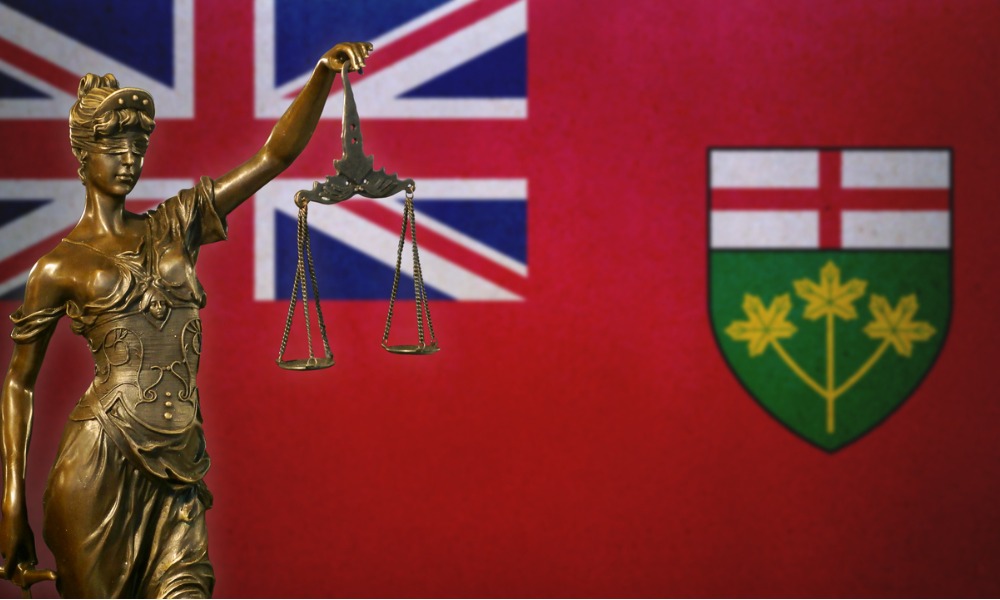The date of discharge from bankruptcy is not necessarily the date of discharge. That’s the proposition - startling at first blush - that emerges from the Ontario Court of Appeal’s November 2007 decision in Murphy v. Stefaniak. The case demonstrates that consumer bankruptcies, like their commercial counterparts, can be rife with nuance and complexity. It arose after Perry Murphy made an assignment in bankruptcy, in May 2002. The bankruptcy went by summary administration without the appointment of inspectors.
The case demonstrates that consumer bankruptcies, like their commercial counterparts, can be rife with nuance and complexity. It arose after Perry Murphy made an assignment in bankruptcy, in May 2002. The bankruptcy went by summary administration without the appointment of inspectors.
Shortly before the first creditors’ meeting, Murphy told the trustee that he had retained an interest in a joint-venture agreement with his former business partner, Philip Stefaniak, who was also a creditor.
The trustee did not follow up on this information until the summer of 2003, after Murphy had received a discharge conditional on his making certain payments to the trustee. Stefaniak’s lawyer responded that Murphy had no interest in the joint venture or its assets.
In response to prodding from Murphy, the trustee’s solicitor indicated, in December 2003, the trustee was not interested in pursuing a claim under the joint-venture agreement, because it had no realizable value.
The trustee’s solicitor indicated that the trustee’s position “would not appear to prejudice your rights to pursue claims under this agreement if you wished.” The difficulty was that Murphy was an undischarged bankrupt at the time and could not sue in his own name.
Murphy made the payments required under the conditional discharge and became entitled to an absolute discharge in January 2005. When Murphy contacted the bankruptcy office to determine his status in April 2005, he was advised that all that remained was for the order to be “stamped and issued.” The formal order, however, was not issued until June 17.
Meanwhile, on April 5, Murphy had sued Stefaniak. He testified he had “every reason to believe I was absolutely discharged at the time.”
Stefaniak, however, defended on the basis that Murphy, as an undischarged bankrupt, had no status to bring the action. The trustee, meanwhile, had confirmed that he had not transferred any interest in the joint venture back to Murphy.
Stefaniak moved to dismiss Murphy’s claim and asked for a creditors’ meeting, which the trustee convened in December 2006. Stefaniak was the only one in attendance, on his own behalf and as proxy for a second creditor. He asked the trustee to tender Murphy’s interest in the joint venture and the lawsuit for sale to the creditors, subject to court approval.
“Had the trustee tendered the asset for sale,” the Court of Appeal noted, “Stefaniak, the defendant in the action commenced by Murphy, would no doubt have attempted to purchase Murphy’s interest in the joint venture and the lawsuit, thereby placing himself in control of a lawsuit in which he was a defendant.”
Instead, the trustee sought directions from the Ontario Superior Court of Justice. Murphy brought a cross-motion asking that his interest in the joint venture be returned. He also sought retroactive rectification of the time when he became an undischarged bankrupt to a date preceding the commencement of his suit.
Justice Charles Hackland granted Murphy’s request by applying s. 40 of the Bankruptcy and Insolvency Act.
“Section 40 is designed to permit a trustee to complete the administration of the bankrupt’s estate,” the court noted. “The trustee may do so by returning property to the bankrupt where that property is of little or no realizable value to the estate.
“If the trustee fails to act under s. 40(1), the court may, on motion, order the property returned to the bankrupt pursuant to s. 40(2).”
Return of the property depended on whether the property was “incapable of realization.” At the creditors’ meeting, however, Stefaniak had taken the position that Murphy’s lawsuit could generate funds for the estate if sold.
But as the court observed, the only two potential bidders were Murphy and Stefaniak, and there was no indication what Stefaniak was prepared to bid or whether Murphy had the means to make a bid.
As the Court of Appeal saw it, Hackland had to consider the competing interests of Murphy and Stefaniak.
Murphy had a reasonable expectation that the property would be returned to him based on the letter from the trustee’s solicitor. Stefaniak’s interest was in a sale where competing bids might generate some distribution monies for the unsecured creditors. Again, however, there was no evidence as to what a bidding process would have generated.
“Although the motions judge was obliged to consider Stefaniak’s interests as an unsecured creditor, he correctly observed that Stefaniak’s interest as a defendant in the outstanding action brought by Murphy could play no role in the exercise of his discretion under s. 40(2) of the BIA,” the court wrote.
“It was not part of the motion judge’s exercise of his discretion to seek to advantage either Murphy or Stefaniak in the litigation.”
Hackland had therefore not erred in exercising his discretion.
“Another judge may have exercised his or her discretion differently and ordered that the action be tendered for sale among the creditors,” the court noted. “The mere fact that the discretion could properly have been exercised differently is no basis upon which to find that it was exercised improperly.”
This conclusion raised the issue as to whether Hackland erred by conveying a property interest in the lawsuit to Murphy even though he was an undischarged bankrupt at the time he commenced the action.
In the Court of Appeal’s view, Hackland had erred in his reasoning. Precedent suggested that an action commenced by an undischarged bankrupt was a nullity.
However, s. 187(5) of the act could be invoked to justify Hackland’s order. It allowed the bankruptcy court to “review, rescind or vary any order made by it under its bankruptcy jurisdiction.”
While incorrect to say that a conditionally discharged bankrupt was absolutely discharged immediately on fulfilling the conditions, the conditional order here was in mandatory terms: it stated that the registrar “shall issue” the absolute order upon being satisfied that the conditions were met.
“It follows that from the point at which he had satisfied the conditions in January 2005, Murphy was legally entitled to an absolute discharge within a reasonable period of time,” the court wrote.
As all that remained to be done when Murphy issued his lawsuit was for the absolute order to be “stamped and issued,” Murphy’s belief that he had been discharged was held in good faith.
While failure to wait for an order of absolute discharge would normally be fatal to proceedings commenced before that happened, the “unusual circumstances” of the instant case made it “consistent with the interests of justice” to vary the absolute date of discharge to April 4, 2005, the day before Murphy commenced his claim.
And doing so would not undermine the general principle that an undischarged bankrupt lacks capacity to commence legal proceedings with respect to property vested in the trustee.
According to Frank Piccin, of Woodbridge’s Piccin Bottos, counsel for Stefaniak, the case turned on the court’s perception of fairness.
“Ultimately the court must have felt that, in light of the trustee’s original decision, it would be unfair not to return the property to Murphy,” he told Law Times.
Alex Gillespie, who represented Murphy, says the decision accords with general policies behind insolvency legislation.
“Protecting the interest of the creditors is one of those policies, but allowing the bankrupt to get on with his life is equally important,” he says.
Gillespie does concede that the optics of the judgment may disturb some observers.
“What some may see as unfair and shocking is that not only do the creditors get shafted because they can’t collect, but then the bankrupt is allowed to maintain a lawsuit against them,” he said. “So their debt is wiped out and then they get sued.
“I can see where some people wouldn’t think that’s fair.”
 The case demonstrates that consumer bankruptcies, like their commercial counterparts, can be rife with nuance and complexity. It arose after Perry Murphy made an assignment in bankruptcy, in May 2002. The bankruptcy went by summary administration without the appointment of inspectors.
The case demonstrates that consumer bankruptcies, like their commercial counterparts, can be rife with nuance and complexity. It arose after Perry Murphy made an assignment in bankruptcy, in May 2002. The bankruptcy went by summary administration without the appointment of inspectors. Shortly before the first creditors’ meeting, Murphy told the trustee that he had retained an interest in a joint-venture agreement with his former business partner, Philip Stefaniak, who was also a creditor.
The trustee did not follow up on this information until the summer of 2003, after Murphy had received a discharge conditional on his making certain payments to the trustee. Stefaniak’s lawyer responded that Murphy had no interest in the joint venture or its assets.
In response to prodding from Murphy, the trustee’s solicitor indicated, in December 2003, the trustee was not interested in pursuing a claim under the joint-venture agreement, because it had no realizable value.
The trustee’s solicitor indicated that the trustee’s position “would not appear to prejudice your rights to pursue claims under this agreement if you wished.” The difficulty was that Murphy was an undischarged bankrupt at the time and could not sue in his own name.
Murphy made the payments required under the conditional discharge and became entitled to an absolute discharge in January 2005. When Murphy contacted the bankruptcy office to determine his status in April 2005, he was advised that all that remained was for the order to be “stamped and issued.” The formal order, however, was not issued until June 17.
Meanwhile, on April 5, Murphy had sued Stefaniak. He testified he had “every reason to believe I was absolutely discharged at the time.”
Stefaniak, however, defended on the basis that Murphy, as an undischarged bankrupt, had no status to bring the action. The trustee, meanwhile, had confirmed that he had not transferred any interest in the joint venture back to Murphy.
Stefaniak moved to dismiss Murphy’s claim and asked for a creditors’ meeting, which the trustee convened in December 2006. Stefaniak was the only one in attendance, on his own behalf and as proxy for a second creditor. He asked the trustee to tender Murphy’s interest in the joint venture and the lawsuit for sale to the creditors, subject to court approval.
“Had the trustee tendered the asset for sale,” the Court of Appeal noted, “Stefaniak, the defendant in the action commenced by Murphy, would no doubt have attempted to purchase Murphy’s interest in the joint venture and the lawsuit, thereby placing himself in control of a lawsuit in which he was a defendant.”
Instead, the trustee sought directions from the Ontario Superior Court of Justice. Murphy brought a cross-motion asking that his interest in the joint venture be returned. He also sought retroactive rectification of the time when he became an undischarged bankrupt to a date preceding the commencement of his suit.
Justice Charles Hackland granted Murphy’s request by applying s. 40 of the Bankruptcy and Insolvency Act.
“Section 40 is designed to permit a trustee to complete the administration of the bankrupt’s estate,” the court noted. “The trustee may do so by returning property to the bankrupt where that property is of little or no realizable value to the estate.
“If the trustee fails to act under s. 40(1), the court may, on motion, order the property returned to the bankrupt pursuant to s. 40(2).”
Return of the property depended on whether the property was “incapable of realization.” At the creditors’ meeting, however, Stefaniak had taken the position that Murphy’s lawsuit could generate funds for the estate if sold.
But as the court observed, the only two potential bidders were Murphy and Stefaniak, and there was no indication what Stefaniak was prepared to bid or whether Murphy had the means to make a bid.
As the Court of Appeal saw it, Hackland had to consider the competing interests of Murphy and Stefaniak.
Murphy had a reasonable expectation that the property would be returned to him based on the letter from the trustee’s solicitor. Stefaniak’s interest was in a sale where competing bids might generate some distribution monies for the unsecured creditors. Again, however, there was no evidence as to what a bidding process would have generated.
“Although the motions judge was obliged to consider Stefaniak’s interests as an unsecured creditor, he correctly observed that Stefaniak’s interest as a defendant in the outstanding action brought by Murphy could play no role in the exercise of his discretion under s. 40(2) of the BIA,” the court wrote.
“It was not part of the motion judge’s exercise of his discretion to seek to advantage either Murphy or Stefaniak in the litigation.”
Hackland had therefore not erred in exercising his discretion.
“Another judge may have exercised his or her discretion differently and ordered that the action be tendered for sale among the creditors,” the court noted. “The mere fact that the discretion could properly have been exercised differently is no basis upon which to find that it was exercised improperly.”
This conclusion raised the issue as to whether Hackland erred by conveying a property interest in the lawsuit to Murphy even though he was an undischarged bankrupt at the time he commenced the action.
In the Court of Appeal’s view, Hackland had erred in his reasoning. Precedent suggested that an action commenced by an undischarged bankrupt was a nullity.
However, s. 187(5) of the act could be invoked to justify Hackland’s order. It allowed the bankruptcy court to “review, rescind or vary any order made by it under its bankruptcy jurisdiction.”
While incorrect to say that a conditionally discharged bankrupt was absolutely discharged immediately on fulfilling the conditions, the conditional order here was in mandatory terms: it stated that the registrar “shall issue” the absolute order upon being satisfied that the conditions were met.
“It follows that from the point at which he had satisfied the conditions in January 2005, Murphy was legally entitled to an absolute discharge within a reasonable period of time,” the court wrote.
As all that remained to be done when Murphy issued his lawsuit was for the absolute order to be “stamped and issued,” Murphy’s belief that he had been discharged was held in good faith.
While failure to wait for an order of absolute discharge would normally be fatal to proceedings commenced before that happened, the “unusual circumstances” of the instant case made it “consistent with the interests of justice” to vary the absolute date of discharge to April 4, 2005, the day before Murphy commenced his claim.
And doing so would not undermine the general principle that an undischarged bankrupt lacks capacity to commence legal proceedings with respect to property vested in the trustee.
According to Frank Piccin, of Woodbridge’s Piccin Bottos, counsel for Stefaniak, the case turned on the court’s perception of fairness.
“Ultimately the court must have felt that, in light of the trustee’s original decision, it would be unfair not to return the property to Murphy,” he told Law Times.
Alex Gillespie, who represented Murphy, says the decision accords with general policies behind insolvency legislation.
“Protecting the interest of the creditors is one of those policies, but allowing the bankrupt to get on with his life is equally important,” he says.
Gillespie does concede that the optics of the judgment may disturb some observers.
“What some may see as unfair and shocking is that not only do the creditors get shafted because they can’t collect, but then the bankrupt is allowed to maintain a lawsuit against them,” he said. “So their debt is wiped out and then they get sued.
“I can see where some people wouldn’t think that’s fair.”







